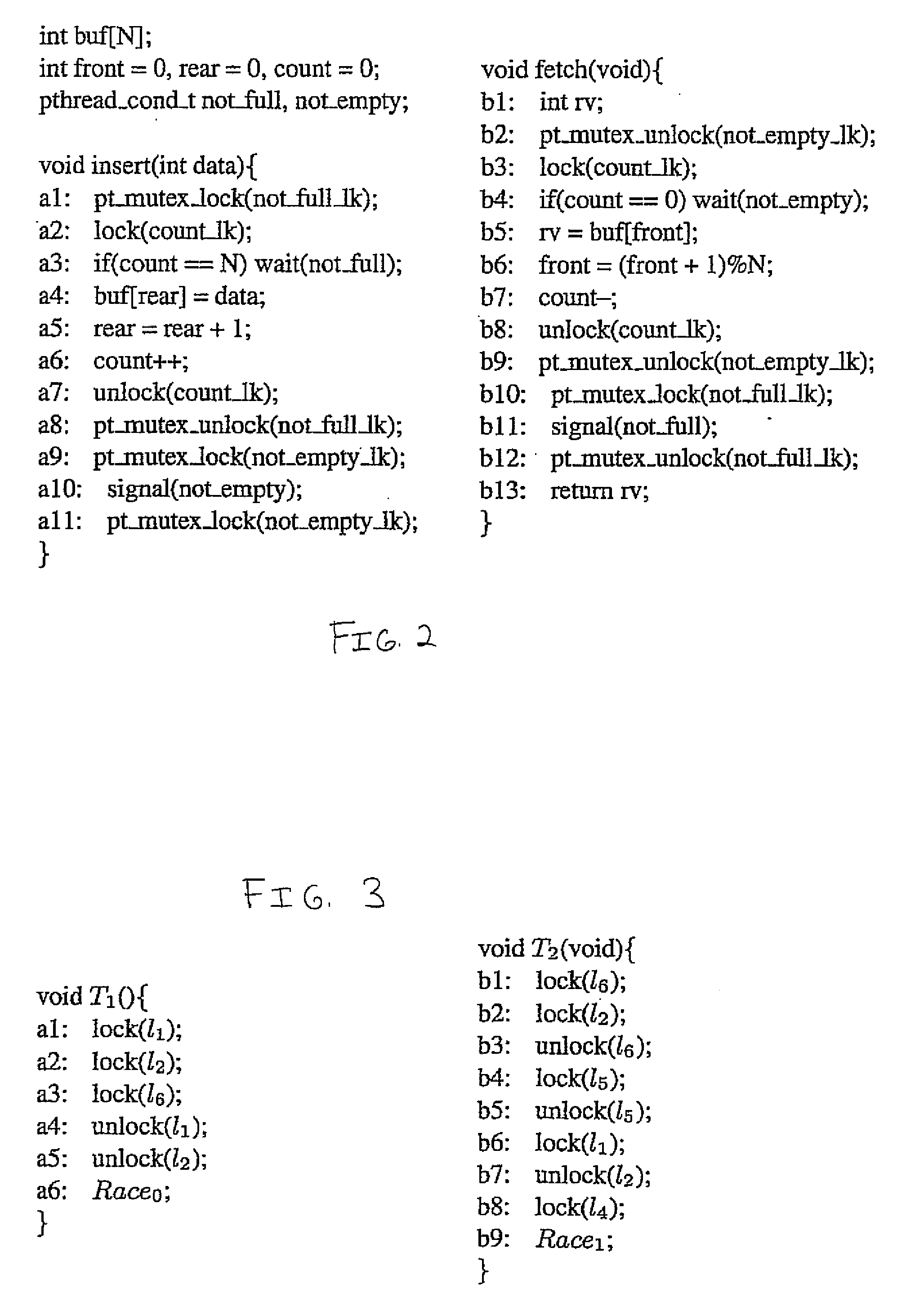Tractable dataflow analysis for concurrent programs via bounded languages
a dataflow analysis and concurrent program technology, applied in error detection/correction, multi-programming arrangements, instruments, etc., can solve problems such as undecidable problems, huge gaps in the requirements of techniques, and unfavorable pdss implementation
- Summary
- Abstract
- Description
- Claims
- Application Information
AI Technical Summary
Benefits of technology
Problems solved by technology
Method used
Image
Examples
Embodiment Construction
[0025]In accordance with the present principles, the use of bounded languages is employed as a unifying framework to capture frequently used programming patterns. We exploit the fact that the language of primitives generated by a recursive program does not have the full power of context freedom and can in fact be captured as a bounded language. A context-free language is called bounded if it is a subset of a regular language of the form w1* . . . wn*, where w1, . . . , wn are fixed words. Bounded languages have the property of non-emptiness of the intersection of a context-free language, which is decidable. This removes the fundamental obstacle in deciding pair-wise reachability as leading to a tractable framework for dataflow analysis.
[0026]Embodiments described herein may be entirely hardware, entirely software or including both hardware and software elements. In a preferred embodiment, the present invention is implemented in software, which includes but is not limited to firmware...
PUM
 Login to View More
Login to View More Abstract
Description
Claims
Application Information
 Login to View More
Login to View More - R&D
- Intellectual Property
- Life Sciences
- Materials
- Tech Scout
- Unparalleled Data Quality
- Higher Quality Content
- 60% Fewer Hallucinations
Browse by: Latest US Patents, China's latest patents, Technical Efficacy Thesaurus, Application Domain, Technology Topic, Popular Technical Reports.
© 2025 PatSnap. All rights reserved.Legal|Privacy policy|Modern Slavery Act Transparency Statement|Sitemap|About US| Contact US: help@patsnap.com



